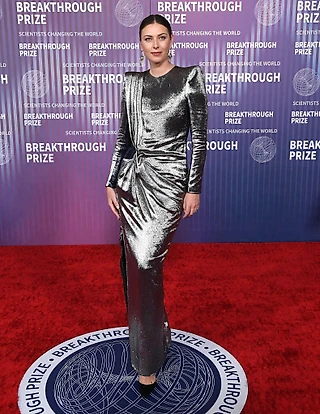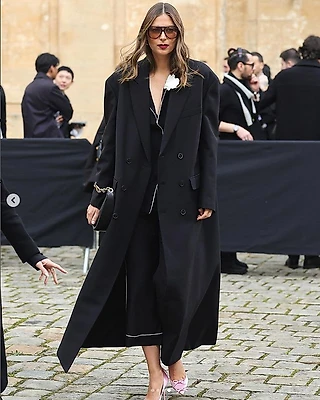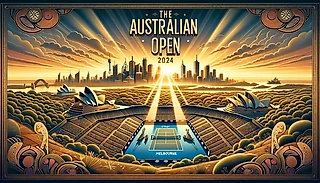Maria Sharapova Granted Wild Card Into U.S. Open Field
Тема та же самая, автор тот же самый, день и дата те же самые, заголовок тоже, только ПЕСНЯ автора другая!
By BEN ROTHENBERGAUG. 15, 2017
MASON, Ohio — The United States Tennis Association has awarded Maria Sharapova a wild card to enter the main draw of this year’s United States Open, which will be her first Grand Slam tournament since serving a 15-month suspension for doping.
Sharapova returned to the WTA Tour after her ban expired in April, but she was not offered a wild-card spot by French Open officials and missed Wimbledon after pulling out of its qualifying tournament with an injury. Sharapova was suspended last year after testing positive for the heart medication meldonium at the 2016 Australian Open, the first tournament she played after the drug had been banned.
Because she returned to the tour this year without a ranking, and has only been able to raise her ranking to 148th because of injury struggles, she has been at the mercy of tournaments to award her wild cards in order to play. U.S.T.A. officials said her status as a past champion — Sharapova won the U.S. Open in 2006 — helped make her case to play this year.
“Her suspension under the terms of the tennis anti-doping program was completed and therefore was not one of the factors weighed in our wild card selection process,” the U.S.T.A. said in a statement. “Consistent with past practice, a wild card was provided to a past U.S. Champion who needed the wild card for entry into the main draw.”
The U.S.T.A. cited previous champions who had received main-draw wild cards at the tournament when they would not have qualified otherwise, including Martina Hingis, Lleyton Hewitt, Kim Clijsters and Juan Martín del Potro, the last of whom received one last year.
“Additionally, Sharapova has volunteered to speak to young tennis players at the U.S.T.A. National Campus about the importance of the tennis anti-doping program and the personal responsibility each player has to comply with the program’s requirements,” the U.S.T.A. added.
Sharapova has played the Open only once since 2012, having missed the 2013 and 2015 tournaments with injuries, and last year’s event because of her suspension.
Sharapova thanked the U.S.T.A. on Twitter, adding, “This is so so special.”
The U.S. Open wild card is the 10th Sharapova has been awarded this year. She earlier received them to gain entry into the first four tournaments she played this year (in Stuttgart, Madrid, Rome and Stanford, Calif.). She also got wild cards into several tournaments she was forced to miss because of injury (Birmingham, England; Toronto and Cincinnati) and for two events she plans to play in China this fall.
Despite those invitations, the U.S. Open’s decision to invite Sharapova differed from the French Tennis Federation’s ruling in May. Sharapova was denied a wild card into both the main draw and the qualifying draw of the French Open, with its president, Bernard Giudicelli, delivering the decision in a monologue on Facebook Live.
“There can be a wild card for return from injuries,” Giudicelli said. “There cannot be a wild card for return from doping.”
That decision was criticized by Steve Simon, the chief executive of the Women’s Tennis Association, who said he believed the decision was extrajudicial since it came after the end of the lengthy ban Sharapova had served. “What they’ve done, in essence, is increase her penalty,” Simon said.
The next Grand Slam event, Wimbledon, did not render a verdict. Sharapova expressed her intention to compete in the qualifying draw, which her ranking allowed her to enter, but then she withdrew from the entire grass court season citing a left thigh injury she sustained in Rome. She returned to competition two weeks ago at Stanford, but pulled out before her second match with a left forearm injury.
That injury also forced her out of the Rogers Cup tournament in Toronto as well as this week’s Western and Southern Open near Cincinnati. Sharapova traveled to Ohio but did not practice, and ultimately she pulled out citing her arm injury “as a precaution for the U.S. Open.”
Unlike the French Open, for which her ranking was insufficient to gain entry, Sharapova would have been eligible to compete in the qualifying draw of the U.S. Open had organizers declined to give her a wild card into the main field.
Early in Sharapova’s return, the topic of her wild cards was a divisive issue among players. But questions about her participation in tournaments have more recently been met with fatigue.
“I’m sure that this is a great moment for her to have an opportunity to be back to where she has done so well,” Venus Williams said. “I don’t necessarily have any thoughts. I’m pretty focused on my own life these days.”
The U.S.T.A. has less discretion with its wild cards than other Grand Slam federations. Five of the eight available are predetermined: two go to Tennis Australia and the French Tennis Federation in a reciprocal swap; another is allotted for the N.C.A.A. singles champion if it is an American; a fourth goes to the winner of the 18-and-under junior national championship; and the fifth goes to the player who has accumulated the most ranking points in a set of tournaments over the summer, called the U.S. Open Wild Card Challenge.
The Australian federation has not yet nominated its wild card choice, but the other four were given to Amandine Hesse, Brienne Minor, Ashley Kratzer and Sofia Kenin.
And in addition to Sharapova’s, the other two discretionary women’s wild cards were awarded to the Americans Kayla Day and Taylor Townsend.
https://www.nytimes.com/2017/08/15/sports/tennis/maria-sharapova-us-open-wild-card.html
>










«ШАРАПОВУ ОБВИНЯЮТ НЕСПРАВЕДЛИВО»
И Гулбис, и Шарапова - из тех немногих избранных, ради кого зритель, теннисный или не очень, готов купить билет и сесть на трибуну. Зная это, директора крупных турниров заманивают их сейчас «особыми приглашениями», до тех пор пока их собственный рейтинг не позволит им попадать туда напрямую.
- Как оцениваете ситуацию с Шараповой?
- Не хочу быть особенно политкорректным, здесь этого не требуется. Конечно, я не слишком хорошо информирован, но мне откровенно не понравились комментарии некоторых теннисисток о Маше.
- Например?
- Когда кто-то, не разобравшись в теме, походя бросает обвинения в ее адрес. Я так понимаю, что мельдоний до определенного момента не был запрещен.
- Совершенно верно.
- Так почему кто-то считает себя вправе утверждать, что все, что она выиграла, теперь не в счет?
- Бабская зависть.
- Скажу так: чисто по-человечески мне нравится, когда играют самые лучшие теннисисты мира, а Маша - точно одна из лучших теннисток мира и, если правила позволяют ей играть, то я хотел бы видеть ее на корте.
Еще понравилось;
- С кем дружите в мужском Туре?
- Общение игроков друг с другом очень поверхностно. Друзей, с которыми можно поговорить по душам, у меня в Туре нет. Вообще, зачем кампания, если есть хорошая книжка?
http://www.sovsport.ru/gazeta/article-item/998084
More
Jon Wertheim Retweeted Biren Desai
credit @Wimbledon for acting morally, declining to bestow these $50k gift bags solely on homegrown players + opting out of reciprocal farce